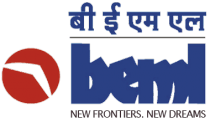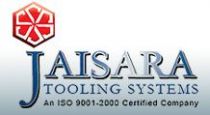Global 3D Printing Market for Automotive and Aerospace Industry: Focus on Technology, Material Type and End-use - Analysis and Forecast (2018-2023)
NEW YORK, Dec. 20, 2018 /PRNewswire/ -- Global 3D Printing Market for Aerospace and Automotive Industry to Reach $9.36 Billion by 2023, BIS Research Reports
Read the full report: https://www.reportlinker.com/p05663445
Rapid growth in technological advancements, innovative designing, and development of a wide variety of materials are the factors propelling the development of the 3D printing market.Various companies across the globe are actively adopting 3D printing technology to develop prototypes and to manufacture end user products with the help of suitable materials and different processes.
The usage of 3D printing in aerospace and automotive industries saves a lot of time and manpower, as it provides faster printing speed, higher accuracy, and helps in avoiding the post-manufacturing processes. Although the 3D printing market currently occupies a low share in the manufacturing industry all over the world, there can be witnessed a gradual increase in the market due to rising awareness across the industry, high adaptability, various intensive research and development and increasing government initiatives to adopt 3D printing for mass production of functional parts in industry verticals such as automotive and aerospace.
The 3D printing market for aerospace and automotive industry varies according to various geographical regions.The 3D printing market for aerospace and automotive industry holds a prominent share in various countries of North America, Europe, Asia-Pacific (APAC), and Rest-of-the-World (RoW).
Geographically, North America led the global 3D printing market for aerospace and automotive industry in 2017 in terms of value.Additionally, APAC region is expected to witness the highest growth during the forecast period (2018-2023).
Growing automotive industry and adoption of 3D printing technology for mass production are some of the factors expected to contribute to the market growth in the APAC region.
The global 3D printing market for aerospace and automotive industry has witnessed several strategic and technological developments in the past few years, undertaken by the different market players to attain their respective market shares in this emerging domain.Some of the strategies covered in this section are product launches & development, business expansion, partnerships and collaborations, and mergers and acquisitions.
The preferred strategy for the companies has been business expansion in order to strengthen their position in the global 3D printing market for aerospace and automotive industry.
The key market players in the global 3D printing market for aerospace and automotive industry are Stratasys Ltd., Materialise NV, 3D Systems, Inc., SLM Solutions Group, General Electric, Arkema, BASF SE, HP Development Company, L.P., Proto Labs, Evonik Industries AG, Royal DSM, EOS GmbH, Ultimaker B.V., Formlabs, Inc., ENVISIONTEC, INC., and Markforged, Inc.
The report is a compilation of different segments of the global 3D printing market for aerospace and automotive industry including market breakdown by technology, material-type, end-use, and region. The report further takes into consideration the market dynamics and the competitive landscape. The report also discusses in detail about the key participants involved in the industry. The report answers the following questions about the global 3D printing market for aerospace and automotive industry:
Key questions answered in the report
-- What are the trends in the global 3D printing market for aerospace and automotive industry across different regions?
-- What are the major driving forces that tend to increase the demand for the global 3D printing market for aerospace and automotive industry during the forecast period, 2018-2023?
-- What are the major challenges inhibiting the growth of the global 3D printing market for aerospace and automotive industry?
-- What was the revenue generated by the global 3D printing market for aerospace and automotive industry by technology in 2017, and what will be the estimates by 2023?
-- Which material type (thermoplastic, metal and others) of the global 3D printing market for aerospace and automotive industry will dominate in the coming years?
-- Which type of thermoplastic material will dominate the global 3D printing market for aerospace and automotive industry in the coming years?
-- What is the revenue generated by the different technologies such as fused deposition modeling, stereolithography, selective laser sintering, polyJet, material jetting, selective laser melting and others?
-- What is the revenue generated by each material used in aerospace and automotive industry?
-- Who are the key players in the global 3D printing market for aerospace and automotive industry?
-- What are the new strategies adopted by the existing market players to make a mark in the industry?
-- What major opportunities do the 3D printing technology providers and material manufacturers foresee?
-- What is the competitive strength of the key leading players in the global 3D printing market for aerospace and automotive industry?
Executive Summary
3D printing has long been considered a tool to design and create unique prototypes of objects quickly. With the advancement in 3D printing technology, the framework of the manufacturing industry is currently under the process of transformation. The 3D printing technology has brought a revolutionary change in the manufacturing industry. The first 3D printing prototype was attempted by Dr. Hideo Kodama of Japan in 1980, for developing a rapid prototyping technique. The growing demand for prototyping has substantially reduced the price of 3D printing over the years. Additionally, the innovative products that will be used as prototypes are expected to further reduce the cost of 3D printing. Therefore, 3D printing is expected to significantly impact the manufacturing industry in the future.
The establishment of 3D printing within the manufacturing industry has resulted in high growth of related service providers, 3D printing engineering and consulting services, as well as manufactures for 3D printing materials.The 3D printing technology is anticipated to dominate the manufacturing industry across the globe for 3D printing functional parts, fit and finish components and the molds and tooling segments for aerospace and automotive industry.
The rapid speed and flexibility of the 3D printing technology as compared to conventional manufacturing processes, is a boon for manufacturing functional parts such as engine parts, turbines, headlights, and bezels in the aerospace and automotive industry.
In 2017, the global 3D printing market for automotive and aerospace industry in terms of value was valued at $3.07 billion, which is expected to reach $9.36 billion by 2023 with a Compound Annual Growth Rate (CAGR) of 17.86% during the forecast period 2018-2023. This growth is attributed to the reliability and accuracy of 3D printed parts, manufactured using 3D printing technology and their cost effectiveness, as compared to parts manufactured conventionally. Additionally, the growing awareness of 3D printing technology in the emerging economies such as India, South Korea and Thailand, among countries of Asia-Pacific (APAC) regions, has propelled the growth of the global 3D printing market servicing the aerospace and automotive industry.
The 3D printing market has developed significantly since 2014 and much has been attributed to the technological advancements in this field.The ecosystem of 3D printing market comprises material suppliers, 3D printed parts manufacturers, and end users.
The market has matured in developed regions such as North America and Europe and is gaining popularity in regions such as Asia-Pacific, Middle East and Africa, and South America. However, barriers such as high investment cost, lack of skilled labor and higher cost of raw materials used are challenges that the 3D printing industry needs to look at.
On the basis of material, the 3D printing market for aerospace and automotive industry includes thermoplastics, metals and others.
Thermoplastics dominated the global 3D printing market for aerospace and automotive industry in 2017 and are anticipated to maintain its dominance throughout the forecast period.Thermoplastics are one of the significant material-types used in 3D printing, with Acrylonitrile Butadiene Styrene (ABS) and Polycarbonate (PC) as the commonly used plastics in the 3D printing market.
The demand for ABS and PC type 3D printing materials has grown aggressively because of the increasing awareness of the benefits of 3D printing to manufacture objects using various plastic materials.This growth in demand for ABS and PC type printing materials is expected to continue in the forecast period of 2018 to 2023.
As the 3D printing market matures, manufacturers are looking towards exploring new plastic materials which have better printing properties as compared to the traditionally used materials.
On the basis of technology, the 3D printing market for aerospace and automotive industry includes thermoplastics, metals and others.Fused Deposition Modeling (FDM) dominated the global 3D printing market for aerospace and automotive industry in 2017 and is anticipated to maintain its dominance throughout the forecast period.
The demand for FDM technology is majorly due to its capability to build tough and durable parts for functional testing and prototyping using high strength materials such as nylon, polycarbonate, and ABS, among others. In addition, FDM technology can process cheaper filaments reducing the final cost of the product used in automotive and aerospace industries.
On the basis of end-use, the automotive industry is expected to register the highest growth rate for the 3D printing market. 3D printing, when used in the automotive sector, can reduce the cost of production and can replace the critical Computer Numerical Control (CNC)-milled parts with in-house manufactured parts. In addition, 3D printed parts are light in weight, reducing the overall weight of the vehicle by 40%, thereby increasing the fuel efficiency of automobiles. Furthermore, the use of 3D printing technology in the automotive industry reduces lead time, transportation cost and inventory costs decreasing the overall cost of the final product.
This report also covers the global 3D printing market for aerospace and automotive industry, by geography, and consequently provides the revenue of the key regions which include North America, Europe, Asia-Pacific (APAC), and Rest-of-the-World (Middle East & Africa, and South America).
North America dominated the market in 2017 with the U.S. as the highest revenue generating country for this market. Industrial advancements, extensive investments for dedicated R&D facilities, and development of 3D printing-based products are some of the major propellers of the growth for the market in the region. Additionally, decreasing prices of printers as well as technological advancements in 3D printing are expected to help the market grow at a very high rate. Asia-Pacific is estimated to be the fastest growing market. The potential growth is expected to be supported by a large industrial base, encouraging government policies, and increasing financial support for research and development in countries such as Japan and China.
The global 3D printing market for aerospace and automotive industry has witnessed several strategic and technological developments in the past few years, undertaken by the different market players to attain their respective market shares in this emerging domain.Some of the strategies covered in this section are product launches, business expansions, joint venture, and partnership, among others.
The preferred strategy for companies has been business expansion in order to strengthen their position in the global 3D printing market for aerospace and automotive industry.
The key market players in the global 3D printing market for aerospace and automotive industry are Stratasys Ltd., Materialise NV, 3D Systems, Inc., SLM Solutions Group, General Electric, Arkema, BASF SE, HP Development Company, L.P., Proto Labs, Evonik Industries AG, Royal DSM, EOS GmbH, Ultimaker B.V., Formlabs, Inc., ENVISIONTEC, INC., and Markforged, Inc.
Countries Covered
-- North America
-- The U.S.
-- Canada
-- Mexico
-- Europe
-- Germany
-- The U.K.
-- France
-- Italy
-- The Netherlands
-- Rest-of-Europe
-- Asia-Pacific
-- China
-- Japan
-- India
-- South Korea
-- Rest-of-Asia-Pacific
-- Rest-of-the-World
Read the full report: https://www.reportlinker.com/p05663445
About Reportlinker
ReportLinker is an award-winning market research solution. Reportlinker finds and organizes the latest industry data so you get all the market research you need - instantly, in one place.
__________________________
Contact Clare: clare@reportlinker.com
US: (339)-368-6001
Intl: +1 339-368-6001
View original content:http://www.prnewswire.com/news-releases/global-3d-printing-market-for-automotive-and-aerospace-industry-focus-on-technology-material-type-and-end-use---analysis-and-forecast-2018-2023-300769804.html
SOURCE Reportlinker




